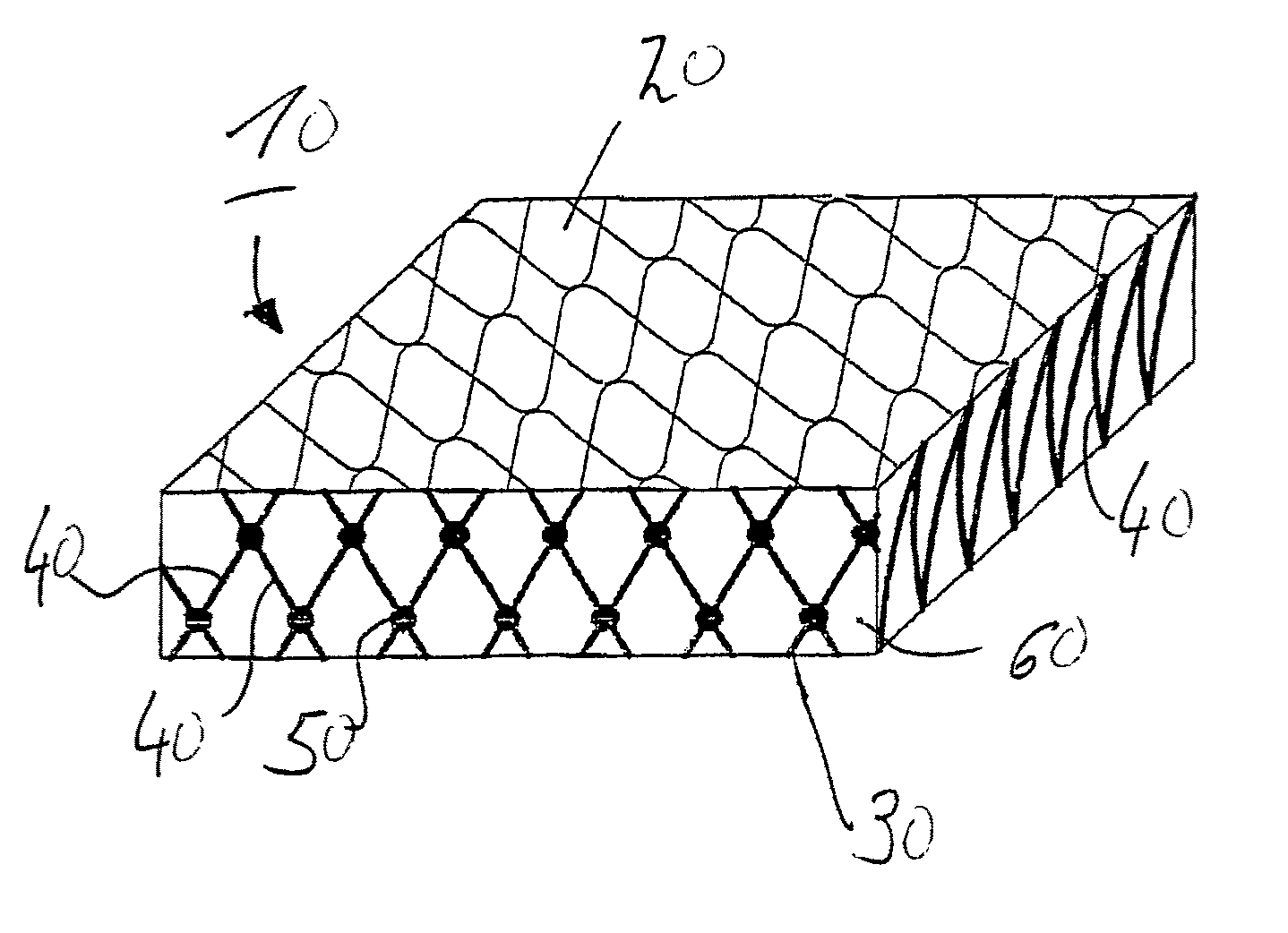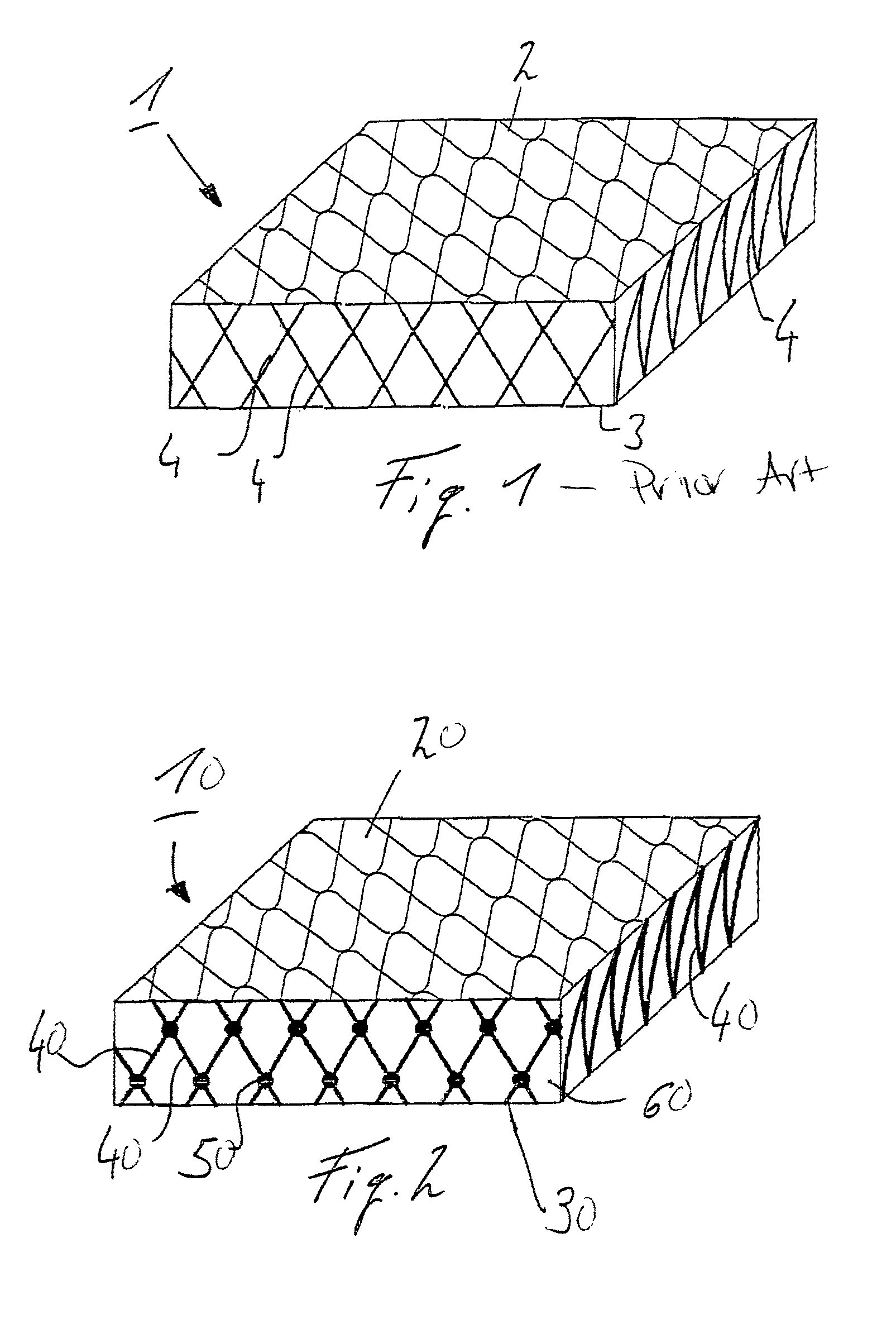Knitted spacer fabric and method for the production thereof
a technology of spacer fabric and yarn, which is applied in knitting, textiles and papermaking, ornamental textile articles, etc., can solve the problems of only a very limited extent of absorbing shear force and only a very limited extent of keeping textiles apart from one another, and achieve the effect of breaking down deformations and stresses
- Summary
- Abstract
- Description
- Claims
- Application Information
AI Technical Summary
Benefits of technology
Problems solved by technology
Method used
Image
Examples
Embodiment Construction
[0016]In FIG. 1, a prior art knitted spacer fabric 1 with an upper textile 2 and a lower textile 3 is shown. Supporting threads 4 are arranged between textiles 2, 3, which cross one another and are fastened to the textiles 2, 3 in a predetermined weave and density. The supporting threads 4 are not connected to one another, and therefore the compression hardness, e.g., the resistance to loading perpendicularly to the textile plane, is determined by the diameter of the supporting threads 4, the bonding of the supporting threads 4 to the textiles 2, 3, the density of the supporting threads 4 in the finished product and the crossing angle of the supporting threads 4.
[0017]To provide a knitted spacer fabric that cannot be pressed together, or can only be pressed together with substantially greater effort, to the knitted spacer 10 fabric shown FIG. 2, includes mutually crossing supporting threads 40 connected to one another at their crossing or connection points 50 either via an adhesive ...
PUM
 Login to View More
Login to View More Abstract
Description
Claims
Application Information
 Login to View More
Login to View More - R&D
- Intellectual Property
- Life Sciences
- Materials
- Tech Scout
- Unparalleled Data Quality
- Higher Quality Content
- 60% Fewer Hallucinations
Browse by: Latest US Patents, China's latest patents, Technical Efficacy Thesaurus, Application Domain, Technology Topic, Popular Technical Reports.
© 2025 PatSnap. All rights reserved.Legal|Privacy policy|Modern Slavery Act Transparency Statement|Sitemap|About US| Contact US: help@patsnap.com


